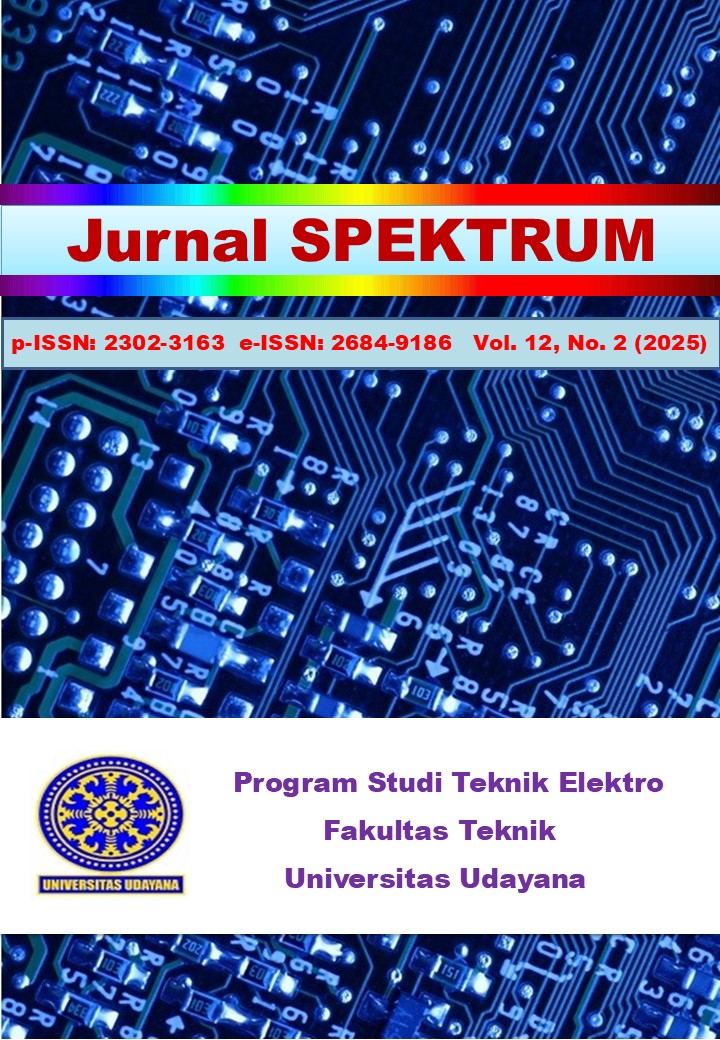ANALISA UNJUK KERJA KODE SMALL KASAMI PADA DIRECT SEQUENCE SPREAD SPECTRUM YANG MENERAPKAN KODE KANAL BCH PADA KONDISI KANAL FREKUENSI SELEKTIF FADING
Abstract
This study analyzes the performance of the small Kasami spread spectrum code on the
Direct Sequence Spread Spectrum (DSSS) system that implements and does not implement the
Bose Chaudhuri Hocquenghem (7,4) (BCH (7,4)) channel code under AWGN channel and
frequency selective fading conditions. Simulation of the application of the BCH (7,4) code on
DSSS-Small Kasami under AWGN channel and frequency selective fading conditions is analyzed
based on the Bit Error Rate (BER) versus Energy Bit per Noise Density (EbNo). The application
of the BCH (7,4) code on DSSS-Small Kasami under frequency selective fading channel
conditions with a delay spread that is much narrower than the length of the Small Kasami code,
produces better performance than that of DSSS-Small Kasami without BCH (7,4) channel coding.
However, under conditions where the delay spread of the fading channel is wider than the length
of the Small Kasami code, the application of the BCH (7,4) channel code has almost the same
performance as without the application of the BCH (7,4) channel code. This is caused by the
increasing multipath components (widening delay spread) causing more autocorrelation values
on the Small Kasami code ACF graph, so that more interference signals will interfere with the
desired signal. Under this condition, both those implementing the BCH (7,4) channel code and
those not have decreased performances.
Downloads

This work is licensed under a Creative Commons Attribution 4.0 International License.



